Polaris Sensor Technologies, Inc.
Polaris Sensor Technologies, Inc.
Hurricane damage to a wellhead resulted in an ongoing leak in the Gulf of Mexico. With our polarization-enhanced thermal imager and software, leaks were easily detected and monitored to find the thickest part of the floating oil.
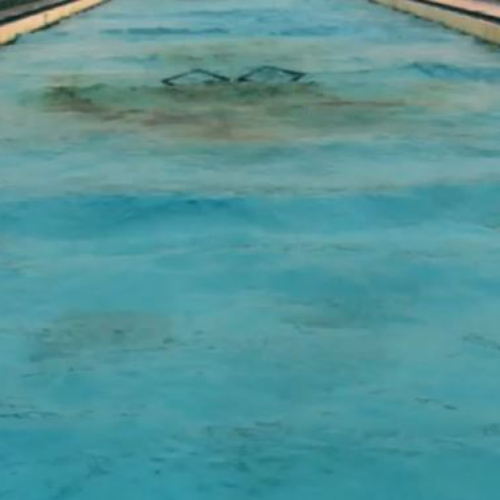
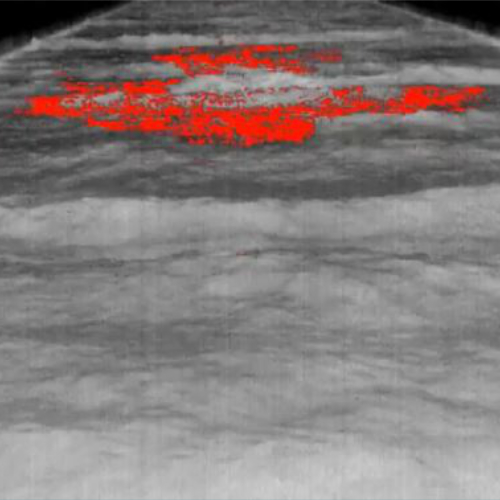
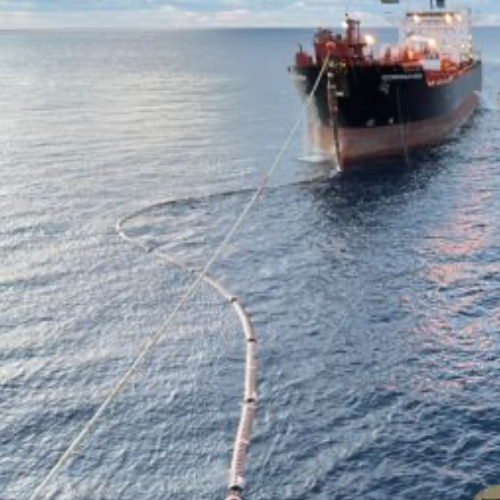
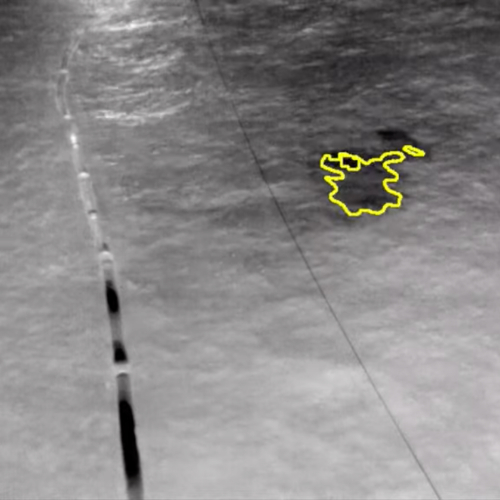
The PODS Pan-Tilt unit automatically monitors a large area from a single position over a pre-programmed path, optimizing detection in the areas you care about most.
Alarms are given on the display and optionally remoted to other locations or devices. The video feed is displayed live for human intervention when necessary.
Both intrinsically safe (shown) and environmentally ruggedized housings for non-explosive environments are available.
PODS Lite uses the same software as PODS, and the software processor is enclosed in a small box. However, it doesn’t have a pan-tilt unit so it is optimized for fixed site, single view situations. Available for both non-explosive and explosive environments.
This system is designed to be used in less demanding environments for autonomous detection of oil spills in one defined area.
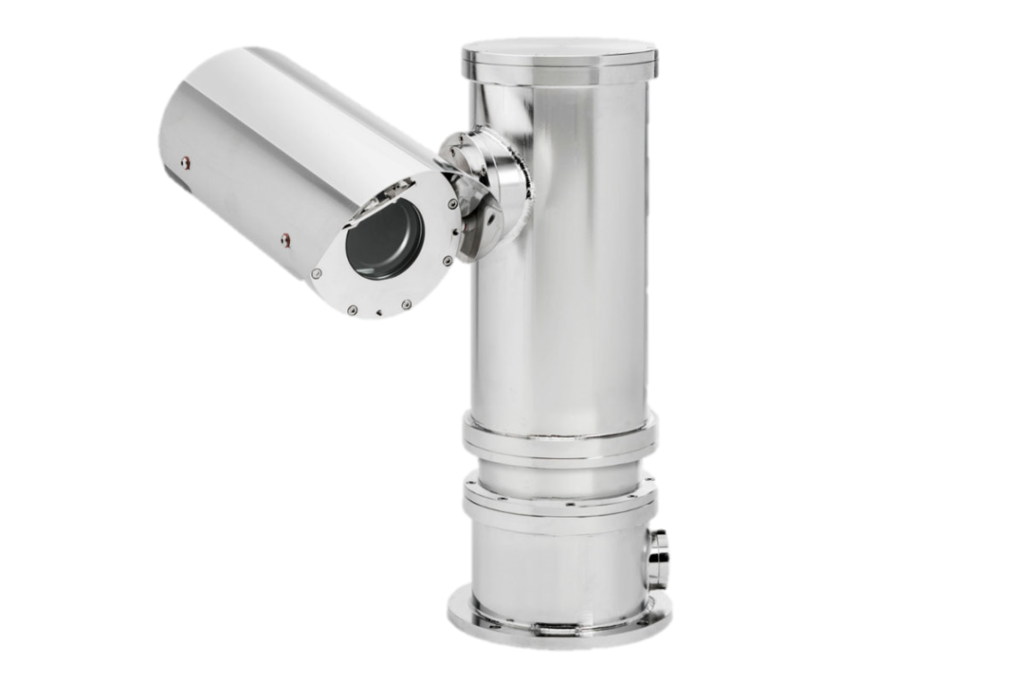
Real-time autonomous operation gives instantaneous video and alarms.
Pan/tilt unit with programmed track can cover a large area from a single site.
Can be used around the clock with excellent results.
Superior performance in waves, enabling operation in calm and stormy weather
Enhanced thermal (eTherm) technology offers all the detection benefits of standard infrared imaging with the added contrast enhancement of polarization.
Detects crude and refined oil, diesel, and Jet-A; insensitive to biologicals such as kelp and algae.
Saves time and money by identifying only oil thick enough for recovery and by measuring dispersant effectiveness directly.
Quickly identifies oil, whether it is a fresh spill or emulsified.
Meets rigorous safety standards for use in potentially hazardous environments.
Several units can be installed for continuous monitoring of large areas or facilities.
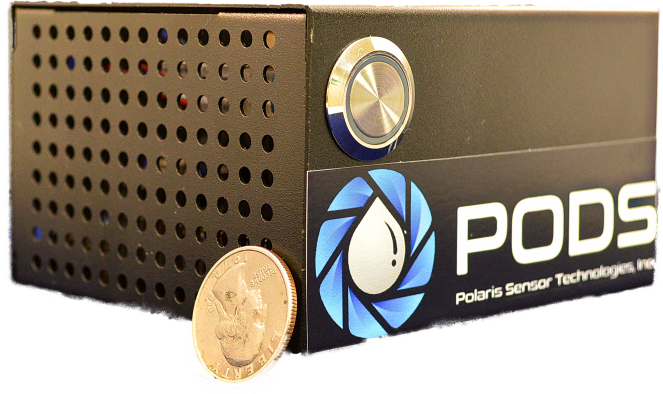







| Detector | Polarized Long-Wave Infrared |
| Resolution | 640 × 512 pixels |
| FOV (standard lens) | 30.4° × 24.6° |
| Size | 505 × 483 × 390 mm |
| Weight | 37kg |
| Input Voltage | 230VAC (±10%) |
| Max Power | 95W |
| Data Interface | GigE (Cat5e or higher) |
| Pan Angle | 350° (±175°) |
| Tilt Angle | 180° (±90°) |
| Construction | Explosion-Proof AISI316L electro-polished stainless steel |
| Mounting | 4 × 11mm on 195mm PCD |
| Operating Temperature | -20°C to +65°C |
Whether you’re monitoring a refinery or cleaning up after an oil spill, PODS helps you quickly and accurately detect oil on water or land.
PODS, or the Polaris Oil Detection System, is an advanced oil spill detection technology that utilizes the cutting-edge Pyxis® polarized infrared camera. It outperforms conventional thermal cameras 24/7, even in rough conditions. When oil is detected, it appears red in the PODS software and triggers automatic alarms.
PODS surpasses conventional thermal cameras in oil spill detection due to its use of the Pyxis polarized infrared camera. This allows for superior performance, even in calm and rough conditions, ensuring a rapid and accurate response.
Yes, PODS is designed to operate effectively in rough weather conditions. Its advanced technology enables it to provide reliable detection regardless of the weather conditions.
PODS offers continuous unmanned monitoring, autonomous operation with real-time video and alarms, the ability to monitor large areas from a single site, day and night operation, and excellent performance in calm water and waves. PODS is superior to radar, which does not work on calm water. Additionally, PODS senses temperature differences, making it highly effective.
PODS Lite uses the same software as PODS but does not have the same intrinsically safe pan-tilt unit. It is designed for use in less demanding environments for autonomous detection of oil spills in one defined area.
Yes, PODS is sensitive to a range of petroleum products including crude and refined oil, diesel, and Jet-A. It is also effective in SAR (Search and Rescue) operations by detecting spilled fuel. It is insensitive to biologicals like kelp and algae.
PODS is certified as explosion-proof, ensuring it meets rigorous safety standards for use in potentially hazardous environments.
PODS aids in oil recovery by detecting recoverable oil. It saves time and resources by identifying only oil that is thick enough for successful recovery efforts.
PODS is available for export to most countries.
Polaris is here to help you solve challenging problems with cutting-edge technology. We will design, develop, and manufacture the solution you need to complete your mission.